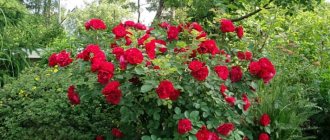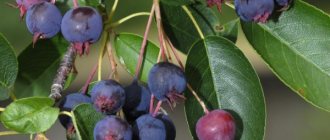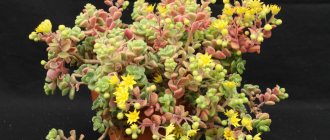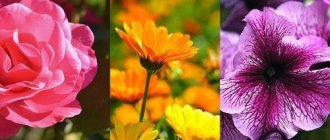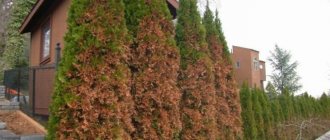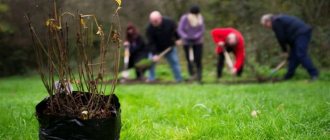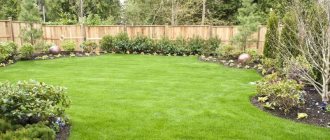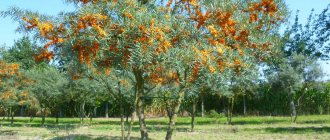Maple, maple leaves: description
Most of the maples are trees 10-40 m high. There are also shrubs 5-10 m high among them.
Maple is mainly a deciduous plant. However, there are also evergreen species (in South Asia and the Mediterranean region).
Maple leaves are opposite, palm-shaped (palmated) in many species. Each blade has 3-9 veins, one of which is in the middle. There are several species with leaves that are compound palmate, compound pinnate, even with pinnate venation or without lobes.
A small number of maple species have trefoil leaves (gray, trifloral, Manchurian and Maximovich maple). The ash-leaved maple has complex pinnate leaves, consisting of three, five, seven and even more leaves. The leaves of the hornbeam maple are the simplest and have pinnate veins, reminiscent of hornbeams.
Places where maple trees grow
Maple is widespread in the Northern Hemisphere (polar regions of Europe and North America, tropical regions of Central America and South Asia). They predominate mainly in temperate latitudes.
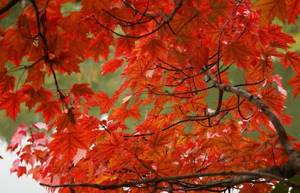
There are about twenty species of maples in Russia. Norway, field, Tartary and white maples grow especially well. They live mainly in the European part of Russia. They are absent in Siberia. Japanese Maple is included in the Russian Red Book.
In the southern territories, maples are mainly distributed in mountainous regions, and mainly at an altitude of up to 3000 m above sea level in the Himalayan mountains. A small number of species also grow on the plain. In practice they grow singly or in small groups.
Spreading
Autumn maple is a decoration of many corners of the globe. The plant is distinguished by its unpretentiousness, so it is suitable even for novice gardeners.
In Eurasia and North America they primarily grow in temperate latitudes, but in Asia they are also found in the tropics. They can be found in the mountains of Borneo and on the island of Sumatra, as well as in the Philippines and Malaysia. Some varieties of maple also grow in the Mediterranean. These trees can be found in Japan. Maple grows especially extensively in the provinces of China: Hubei, Yunnan, Sichuan. There are suggestions that these places are also the place of origin of the plant, from where the further spread of the species began.
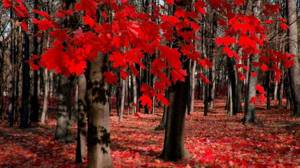
Maple is considered a mountain plant, but some of its species are also common on the plains. Many of them are quite suitable for cultivation in fertile conditions in the cities of Russia (middle zone).
Maples are relatively heat-loving plants, especially Japanese and Chinese species. However, many of them can easily withstand the northern winters of Russia. As a rule, in nature they do not form any continuous stands. The trees grow interspersed with other broad-leaved species, and a little less often with conifers. Therefore, the autumn maple in the forest is a relatively rare, but surprisingly beautiful bright spot among other vegetation.
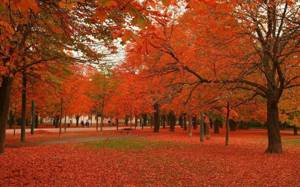
Medical and other uses
In folk medicine, treatment with maple leaves and more is widely used. Young leaves (sap), seeds, maple branches and root bark are used.
And cooking makes extensive use of sugar maple sap. Syrup and sugar are made from it. The branches, seeds, leaves and wood of this tree are even used in magic.
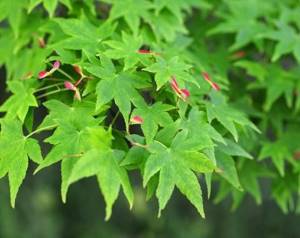
The healing properties of the plant have been known for a long time. Maple (and its parts) is widely used in medicine and healing.
What are the healing properties of maple leaves?
1. Young leaves have a sticky, white, pleasant-tasting juice rich in vitamin C.
2. It has antiscorbutic, tonic and diuretic properties.
3. Seeds and leaves have choleretic, diuretic, antiseptic, wound healing, anti-inflammatory, tonic, and analgesic effects.
4. The bark of maple branches and roots has good astringent properties.
5. Spring maple sap has properties similar to birch sap.
6. Maple leaves (decoction) are used to treat arthritis and blood vessels.
7. This drug perfectly crushes stones in the bladder and kidneys.
8. Klenovka (sweet maple juice) is drunk for scurvy and pain in the lumbar region (lumbago). The juice contains a substance that resembles antibiotics in its properties.
In some areas of Canada and Russia, where immigrants from Russia and Ukraine live, maple sap is used as a remedy for treating shallow wounds. Perhaps this juice also has disinfecting properties.
In addition to the juice, the bark is also harvested in the spring for medicinal purposes.
Autumn maple leaves
In the fall, maple leaves turn yellow and red-orange colors interspersed with the remaining summer greens. Moreover, each leaf vein can have its own color. One small leaf can have about 6 colors.
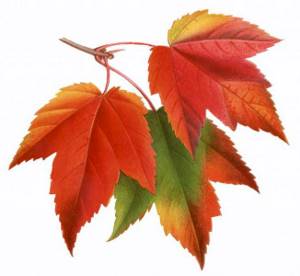
And how beautiful are the golden landscapes during the bright autumn with maple forests!
Many artists and photographers add beautiful works to their collections at this time of year: still lifes, landscapes.
Foliage of maple trees
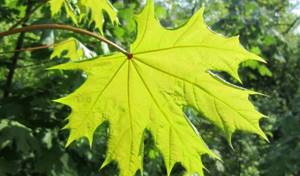
It is the intricate shape of the leaves that forms a beautiful carved crown of a rounded shape. There are species with compound-fingered and trifoliate foliage - for example, the Manchurian tree or the species discovered by Maksimovich.
Gardeners plant specimens in plots whose foliage turns purple or bright golden by autumn. There is a variety called Crimson King. This maple even in winter has a purple crown with a violet tint. The Crimson Sentry variety has a pyramidal crown shape; by autumn its leaves darken and also become purple-red. The Deborah species is famous for its red foliage in summer, which turns bright yellow with an orange tint in autumn.
There are many variegated (variegated) species. The foliage of the Drummond variety remains dark green until late autumn.
Maple leaves in summer and autumn
Candidate of Biological Sciences M. Aleksandrova
Maples are fantastically beautiful in autumn. As they fall, golden and crimson leaves silently fall to the ground. That's what it is ". lush nature withering away. Forests dressed in scarlet and gold.”
The beauty of maples has captivated people for a long time. It is not for nothing that their autumn attire is a favorite motif in ancient Chinese and Japanese engravings. The maple leaf adorns the flag of Canada, whose forests are rich in these trees.
Maples in the forests of their homeland can be found by residents of Europe, Asia, islanders of the Sunda archipelago and inhabitants of the North American continent. More than a dozen species grow in Russia.
The genus name comes from the Latin word Acer and means “sharp.” And indeed, maple leaves have sharp edges.
Botanists know about 150 species of maples. Among them there are trees and shrubs. Not only their leaves are beautiful, but also their flowers, fruits and even the pattern of their bark.
In our latitudes, sap flow in maples begins much earlier than in birch: in the Moscow region, for example, already in March, confirming the onset of spring.
Far Eastern maples are especially beautiful in autumn, in particular the Ginnala and greenbark maples.
Ginnala maple (Acer ginnala Maxim.) is a shrub up to 5 m high, grows quickly, is winter-hardy, light-loving, tolerates replanting and pruning well. Gives abundant growth. It is not demanding on soil fertility, but does not tolerate salinity. Moisture-loving.
Effective in compositions with snowberry, dogwood, oleaster or against the background of conifers. Will decorate any pond.
Green maple (Acer tegmentosum Maxim.) is a shrub or tree more than 3 m high. It grows slowly. Shade-tolerant, but prefers light. It is moisture-loving, demanding of soil fertility and moisture. Tolerates transplantation well. It has soft wood, like linden, which is why in its homeland it is called “maple-linden.”
North American maples are no less attractive and quite winter-hardy in central Russia.
Silver maple (Acer saccharinum L.) near Moscow grows as a single- or multi-stemmed tree up to 10 m high. It loves moisture; shade-tolerant. The branches are fragile and often break off by wind and snow, so periodic pruning is recommended. After harsh winters, frost marks remain on the trunks.
Red maple (Acer rubrum L.) is always beautiful: in spring, summer and autumn. Grows quickly. Prefers light and is quite shade-tolerant. Demanding on soil and air moisture. One of the few maples that tolerate excess moisture and stagnant water. Does not tolerate soil compaction well. In harsh winters it sometimes freezes. With good care it can live up to 300 years.
The most spectacular garden forms of this maple are: Armstrong - its leaves are distinguished by a bluish tinge; Scanlon - with red-orange autumn leaves; Globosum - with a spherical crown; Drummondii - with bright scarlet lionfish.
Ash maple (Acer negundo L.) was brought from North America, which is why it is also called American maple. A tree 15 m high, with a wide crown and brittle branches, grows quickly. It is photophilous and undemanding to soils, although it prefers moist and drained sandy soils and tolerates temporary excess moisture. It tolerates shaping and cutting well.
The attention of amateur gardeners is attracted by the low forms of this maple, which has elegant leaves: Aureo-variegatum - dark green, with golden-yellow stripes; Flamingo - green, with pinkish-white edges and stripes; Odessanum - bronze when blooming, later golden yellow; Argenteo-variegatum - bordered along the edge with a wide white stripe. The original color of the leaves of all forms is preserved only in the light.
Norway maple (Acer platanoides L.) is the most popular and famous maple in Russia. Tall tree - up to 30 m. Demanding on soil fertility and moisture, does not tolerate stagnant water, produces abundant growth from the stump. Wind resistant. Suffers from soil compaction. Winter-hardy. Goes well with conifers.
Garden decorative forms of Norway maple Drummond, Globosum, Crimson King are more suitable for single plantings. Drummond maple (Drummondii) has white-edged leaves, pink when blooming; Globosum has a thick, spherical crown that does not require pruning, and yellow-orange leaves in the fall; Krimson King has dark purple, almost black leaves throughout the growing season.
Tatarian maple (Acer tataricum L.) is a tall shrub or small tree up to 9 m high with almost black bark, hence its second name - black maple. Grows moderately and improves soil. Tolerates salinity. Winter-hardy. It renews well with shoots and produces abundant layering. Suitable for hedges. Combines in compositions with larches, pines, birches, oaks, lindens. A well-known garden form is Red (Rubra) with blood-red autumn leaves.
False sycamore maple (Acer pseudoplatanus L.) is a tree 25-30 m high. It grows quickly. Does not tolerate dry soils and excessive moisture and does not tolerate salinity. Shade-tolerant, winter-hardy. Decorative forms are popular, in particular: Leopoldii (Leopoldii) - with white-variegated leaves; Yellow-variegated paradise (Flavo-variegata) - with leaves with yellow spots and stripes; Purpurea - with leaves purple below and dark green above; Red-fruited (Erythrocarpa) - with bright red lionfish.
HOW TO GROW A MAPLE
It is better to plant maples in a sunny or semi-shaded place. Dimensions of the planting pit: 50x50x70 cm. The root collar should be at ground level or slightly recessed (up to 5 cm). Soil mixture for plants requiring fertile soils (Ginnal maple and holly): humus or peat compost, turf soil, sand (3:2:1). For ash maple: leaf soil, peat, sand (2:2:1). If the area is swampy and groundwater is close, drainage is required (construction waste, sand in a layer of 10-20 cm). The distance between plants in a group is 2-4 m, in a hedge - 1.5-2 m.
It is a good idea to add complete mineral fertilizer during planting at the rate of 120-150 g of nitroammophoska into each planting hole. The watering rate after planting is 30 liters per plant. The tree trunk circles are mulched with peat or soil in a layer of 3-5 cm. In the summer, Kemira-universal fertilizer is applied (100 g per 1 m2). Water once a month, in dry times (15 l) - once a week.
Maples tolerate pruning well. Dry branches are systematically removed, and in the Tatarian maple, which grows slowly in the first years, the above-ground part is cut off every 2-3 years, as they say - planted “on the stump”. Most maples are winter-hardy and do not require additional shelter for the winter.
It is easy to grow maples from seeds and green cuttings. Decorative forms are propagated by grafting.
In Norway maple, Tatarian, Ginnal, and greenbark maples, the seeds remain viable for two years, in false sycamore maple - less than a year.
In nature, the seeds of fallen maples undergo natural stratification in winter and germinate in summer. When breeding in the garden, they require long-term stratification at a temperature of 3-5 o C. Experts recommend the following terms: for Norway maple - 110 days, Tatarian maple - 100, greenbark - 120, Ginnal - 110, ash-leaved - 40 days.
To stimulate germination, all seeds are soaked in hydrogen peroxide for 24-72 hours before sowing.
At the end of April - beginning of May, the sprouted seeds are sown in the beds and planted to a depth of 3-4 cm. In most types of maples they germinate within 15-20 days, and in the first year of life the shoots reach a height of 40-80 cm. Caring for them consists of in weeding, loosening and watering, in the heat it is better to shade from the sun. Transplantation to a permanent place is carried out at the age of one to three years.
Maples of decorative forms are usually propagated by grafting onto maples of the same species: budding (grafting with a bud) or copulation (grafting with a cutting). Thus, a decorative form is grafted onto a wild-growing Norway maple rootstock. The height of the trunk is from 0.5 to 3 m. The best time for grafting is early spring, before the sap begins to flow. (For more information about vaccination, see “Science and Life” No. 4, 2002)
Maple (Acer)
Family: Maple
Brief information about the garden plant
Etymology
The name is derived from the Latin acer - “sharp”, from the shape of the leaves with sharp blades.
Types and varieties of maple
The genus contains about 150 species, distributed in North America, Asia, Europe and North Africa, mainly in areas with temperate climates. There are 16 species growing in our country. About 40 species are used in ornamental gardening.
Norway maple, or sycamore maple (Acer platanoides)
Homeland - European Russia and the Caucasus.
Norway maple reaches a height of 30 m, the bark is fissured, at first dark gray, later turning black. It blooms in mid-May, at the same time as foliage.
The species is demanding on soils, does not tolerate stagnant moisture and salinity, and is wind-resistant.
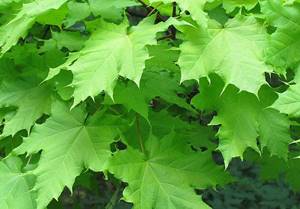
Norway maple, or sycamore maple, Acer platanoides
Decorative forms and varieties of Norway maple:
'Albescens' is a large deciduous tree with a broad oval crown, young leaves are creamy white, mature leaves are green;
'Bicolor' - young leaves are light yellow with cream strokes, later they turn pink;
‘Cleveland
' - characterized by a compact crown shape, when blooming the leaves are light red, then bright green, autumn color is yellow-orange;
'Columnare'
- up to 10 m high, with a columnar crown shape, characterized by a slow growth rate. The leaves are red when blooming, later dark green;
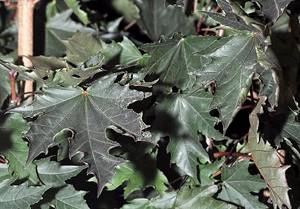
Plantain maple Crismon Sentry or Crimson Sentry is a slender tree, up to 7-8 m high with dark red leaves
'Crimson King' has purple leaves throughout the season;
'Drummondii' - a tree up to 5 m high, distinguished by a wide cream border on the leaves;
'Emerald Queen'
- up to 12-15 m high, distinguished by an oval crown shape and leaves that, when blooming, become light red, then acquire a dark green color, and light yellow in the fall;
'Faassen's Black' - young leaves are light red, mature leaves are dark purple (almost black);
'Fairview'
— the variety is distinguished by its pyramidal crown shape and dark green leaves;
'Globosum'
— the variety is distinguished by a dense, spherical crown shape;
'Maculatum' - low tree, young leaves with small white and pink strokes;
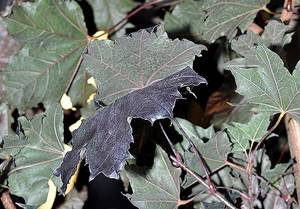
Norway maple or sycamore variety 'Royal Red' is distinguished by large, bright red leaves during the growing season
'Schwedleri'
— the variety is distinguished by shiny red young leaves that change color from bronze-green in summer to orange-copper in autumn;
'Variegatum' - young leaves with pink strokes, then they turn white.
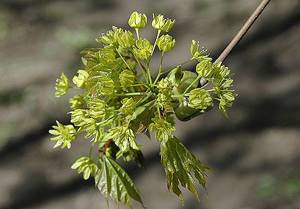
Norway maple flowering
Field maple, or oaklen (Acer campestre)
Homeland - forest-steppe of the European part of Russia, Crimea and the Caucasus.
Tree or shrub up to 15 m high with a dense, spreading, tent-shaped crown. The bark is light gray, the shoots and buds are pubescent, the leaves are smaller than those of K. holly.
Field maple is shade-tolerant and drought-resistant. It is preferable to plant it in places protected from the wind. In winter hardiness it is inferior to Norway maple. It tolerates pruning better than other maples.

Field maple, or oaklen, Acer campestre
Popular varieties of field maple:
'Albovariegatum' is usually a shrub, about 5 m tall with white-variegated leaves, yellow in autumn;
'Carnival' - young leaves with a wide pink border, then the border turns white;
'Elsrijk' - a tree, up to 8 m tall with a compact conical crown and small leaves;
'Red Shine' - tree up to 5 m tall with purple leaves;
'Postelense' is a low tree with a wide and low crown, the bark is brownish with longitudinal cracks, the leaves are first golden-yellow, then green, and yellow in autumn;
'Pulverulentum' - young leaves are creamy, mature leaves have a lot of white spots.
Maple mono, or small-leaved maple (Acer mono)
A tree up to 15-20 m high with a dense and low crown, leaves smaller than those of Norway maple. Young branches are yellowish-gray, old ones are brown. The leaves are five-lobed, small, dense. The flowers are light yellow (May), collected in paniculate inflorescences. The fruits ripen in August. Autumn foliage color is bright yellow, orange and red.
The popular variety 'Marmoratum' is a low tree with a rounded crown, gray bark, leaves with white spots of various sizes, yellow in autumn.
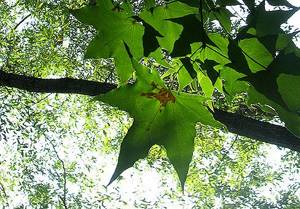
Mono maple, or small-leaved maple, Acer mono
Red maple, scarlet maple or swamp maple (Acer rubrum)
A fast-growing deciduous tree with a spreading tent-shaped crown, up to 15-20 m tall in cultivation, in nature up to 30-40 m. The bark is dark gray, young shoots are reddish. The leaves are five-lobed, reddish when blooming, and during the summer they are rich green on top and whitish on the underside. In autumn the foliage is bright orange.
Red maple is quite frost-resistant and undemanding to soil conditions. Grows well in urban conditions, on uncompacted soils. Not affected by powdery mildew.
Decorative varieties of red maple or swamp maple:
'Armstrong' - the variety is distinguished by a column-like crown shape and smaller foliage;
'Brandywine' - the variety is distinguished by its rich, even purple, foliage color in autumn;
'Karpik' - the variety is distinguished by the regular columnar shape of the crown and the bluish color of the foliage;
'Northwood' - the variety is distinguished by very bright autumn foliage color - red and orange;
'Autumn Flame' - variety has bright red autumn foliage;
'Red Sunset' - the variety is distinguished by a pyramidal crown shape and large purple leaves in autumn.
Ginnala maple, or river maple (Acer ginnala)
Homeland - forests of the Far East.
Shrub or tree height from 2 to 5-7 m. The bark is brown. The leaves are oblong, three-lobed, pinkish when blooming, mature dark green, bright red or orange in autumn. The flowers are yellowish, fragrant. The fruits are lionfish, bright pink before ripening. The species is light-loving and frost-resistant.
The 'Flame' variety has an unusually beautiful autumn leaf color, and the 'Durand Dwarf' variety is only 50-60 cm high, the leaves are small, the autumn color is very bright.
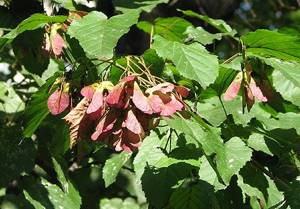
Ginnala maple, or river maple, Acer ginnala
Palm maple or fan maple (Acer palmatum)
Shrub or small tree up to 8 m tall, with a round or umbrella-shaped crown. The leaves of this maple are strongly dissected, lobed, bare, up to 12 cm in diameter, very decorative: red when blooming, green in summer, purple in autumn.
It grows slowly, is demanding on soil and moisture, suffers from dry air, is quite thermophilic, and regularly freezes, sometimes to the level of snow. Prefers fertile, humus-rich, well-drained acidic or neutral soils. It is possible to grow in a container culture with winter maintenance at low positive temperatures.
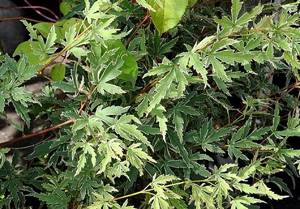
Popular varieties of palm maple:
'Aureum' - shrub up to 1 m tall, young leaves are light yellow with a reddish edge, yellow-green in summer, yellow in autumn;
'Atropurpureum' - about 2 m high with highly lobed, dark purple throughout the season;
'Dissectum' - a group of varieties in which the leaves are divided to the base into pinnately divided lobes: 'Dissectum Flavescens' - leaves are yellowish-green in summer and yellow in autumn;
'Deshojo' - maple is distinguished by the crimson-red color of young leaves, later they become light green;
'Okushimo' - the variety is distinguished by green foliage;
'Ornatum' - the variety is distinguished by the color of the leaf blade: red-brown - green-brown - fiery scarlet, depending on the season: spring - summer - autumn.
Sugar maple, or silver maple (Acer saccharinum)
A large North American tree with a tent-shaped, spreading crown in nature up to 40 m, in cultivation up to 25 m in height. The bark is light gray. The leaves are five-lobed, heavily indented, bright green, silvery-white underneath, turning light yellow or pinkish-orange in the fall. The flowers are greenish-yellow (April), the fruits ripen early.
It grows quickly, is shade-tolerant, and is quite undemanding to soil.
In their homeland, the sap of sugar maple and sugar maple is used for the industrial production of maple sugar.
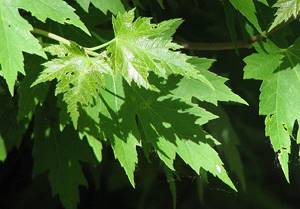
Sugar maple, or silver maple, Acer saccharinum
Popular varieties of sugar maple:
'Aureo-variegatum' is a deciduous tree with a wide spreading crown, the leaves are silvery below, with yellow strokes above, with an orange tint when blooming;
'Citreo-variegatum' - young leaves yellow-green;
'Vagneri' is a low-growing variety, the leaves are small, with a small white border;
'Hance's Variegated' has leaves with creamy white streaks.
Manchurian maple (Acer mandshuricum)
A slender tree up to 20 m high. The crown is openwork, usually raised high. The bark is gray, young shoots are red-brown, glabrous. The leaves are dark green, compound, trifoliate with reddish petioles. The flowers are greenish-yellow, collected in corymbose inflorescences. In summer the leaves are often reddish along the veins and along the edges, in autumn they are deep red. Blooms in May, bears fruit in September.
The species tolerates some shade, but develops better in sunny places. The soil is preferably fertile, the species is winter-hardy.
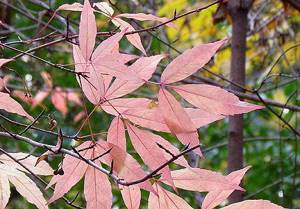
Manchurian maple in autumn
Tatarian maple, black maple or non-maple (Acer tataricum)
Shrub or tree with a spreading crown, up to 9 m high. The bark is smooth, almost black. The trunk is gracefully curved. The leaves are entire, up to 10 cm long, dark green in summer, yellow or red in autumn. The flowers are white, collected in dense panicles. The fruits are lionfish, remain on the tree for a long time and are colored red in summer.
Tatarian maple is winter-hardy, drought-resistant and undemanding to soil conditions. Tolerates haircuts well.
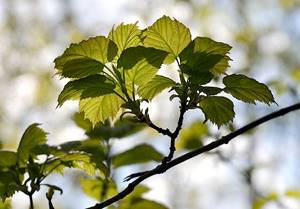
Tatarian maple or black maple
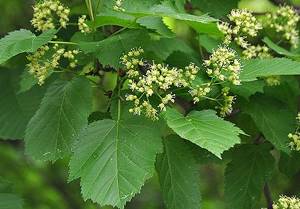
Flowering Tatarian maple
Greenbark maple (Acer tegmentosum)
This species grows in the Far Eastern taiga forests, China and Korea. It was introduced into culture in 1892.
A tall shrub or tree in nature up to 15 m high. The bark is smooth green with longitudinal whitish stripes. Leaves are up to 17 cm long, yellow in autumn. Blooms in the second decade of May. Flowering and fruiting begins at the age of 9 years.
Greenbark maple grows quite quickly, prefers sunny places, but also tolerates slight shading. Does not need pruning. Frost-resistant.

Blooming green maple
Ash-leaf maple, or American maple (Acer negundo)
Homeland - North America. This North American species has successfully adapted to the climatic conditions of Russia.
A tree up to 20 m tall, often multi-stemmed, with a wide spreading crown. The bark is light brown. The bark of young shoots is covered with a bluish waxy coating. The leaves are compound, consisting of 3–5 leaflets. It blooms in May, the fruits ripen in September.
The species is extremely unpretentious, light-loving, and undemanding to soils. It reproduces well by self-sowing and grows quickly and weeds at a young age.
Popular forms and varieties of ash maple:
'Auratum' - tree up to 7-10 m tall, spreading crown, young foliage bronze, later lemon yellow;
'Elegans' - up to 5 m, young leaves with a bright yellow edge, adult leaves with white;

Ash-leaved maple variety Flamingo or Flamingo - up to 5 m tall, leaves with white and pink patterns
'Aureo-Variegatum' - the variety is distinguished by the color of the leaves: dark green with golden-yellow spots, light-loving;
'Odessanum' - bronze-colored leaves when blooming, later becoming bright, golden yellow;
'Variegatum' - the leaves are pink when blooming, then with a white border or random streaks.
Pennsylvania maple, or striped maple (Acer pensylvanicum)
Tree up to 12 m tall, the bark is smooth, dark green, with longitudinal whitish-green stripes. It grows slowly. K. Pennsylvanian is a shade-tolerant species, undemanding to soils and frost-resistant.
Curly maple (Acer circinatum)
Homeland - territory along the Pacific coast of North America.
A low tree with spreading shoots, often growing as a bush. The leaves are round in outline, have 7-9 lobes, each with a serrated edge. The leaves reach 6-12 cm in diameter. Blooms in the first half of May. The flowers are red, collected in drooping racemes.
Frost-resistant, annual shoots can freeze.
Curly maple varieties:
'Little Gem' is a dwarf variety with a rounded crown. The leaves are small, with a reddish tint when blooming, and red and orange in the fall;
'Monroe' - purple branches, leaves dissected to the very base into wide coarse-toothed lobes, orange-yellow in autumn;
'Pacific Fire' - bright red branches, leaves turn yellow in autumn.
False Siebold maple (Acer pseudosieboldianum)
Homeland - Far East.
A low, no more than 8 m tall tree with a dense spherical crown. Blooms in mid-May. The leaves are fan-shaped, medium-sized, nine-lobed. In summer they are light green, in autumn they are yellow, pink and red.
Winter hardiness is high, but in severe winters, annual shoots can freeze.
Naked maple (Acer glabrum)
A small tree or shrub several meters high. Young branches are dark, reddish-brown, later turning gray. Leaves are up to 5-6 cm long, 3-lobed, on red petioles, dark green above, bluish below, yellow in autumn. The flowers are greenish-yellow. Unripe fruits are red.
Yellow maple (Acer ucurunduense)
A small tree or shrub up to 8 m tall, with a narrow crown. Leaves are up to 14 cm wide, with 5-7 lobes, the lobes are oval, long pointed, with rough teeth. The leaves are dark green, orange and red in autumn. Blooms after the leaves bloom. Small flowers are collected in long and narrow protruding racemes up to 15 cm long. The wings of the fruit are compressed.
Maple care
Maples are demanding on soil (they act as soil-improving species). On swampy soils and when groundwater is close to each other, drainage is necessary. The soil mixture for maples that require fertile soil includes humus, turf soil and sand (3:2:1); for less demanding ones, leaf soil, peat and sand (2:2:1) are suitable.
Maples are relatively shade-tolerant and wind-resistant. They grow slowly, many species are drought-resistant, but maples need to be watered in hot weather.
It is necessary to cut out dry branches and frost-damaged annual shoots.
Most species overwinter without shelter, however, some species, such as K. palmate, are heat-loving and in central Russia require shelter for the winter.
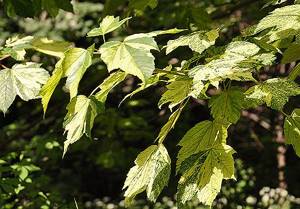
Maple propagation
Maples are propagated by sowing, and decorative forms by grafting.
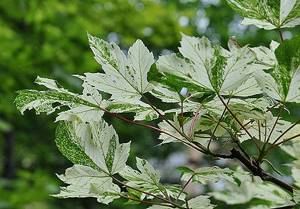
False-platan maple Simon-Louis Fréres or Simon-Louis Fréres is a tree up to 20 m tall with a dense crown. The variety is close to the famous Leopoldi variety. The leaves are cream when they bloom, then light green with a creamy white and green pattern, when mature they are even more contrasting.
Use in garden design
Maples have been cultivated since ancient times in gardens and parks throughout Europe. Different types and cultivars of maples can differ greatly in height and habit. Maples are grown in groups, planted in alleys and used as tapeworms. K. arvensis is used to form difficult-to-pass hedges.
What does a maple tree look like? Types of maples: tall and majestic
Among the maples there are very large representatives. One of them is the majestic maple, or velvety maple (Acer velutinum), which grows in eastern Transcaucasia and the mountains of Northern Iran. With a height of 50 m, it looks like a real giant, moreover, the diameter of its trunk reaches 1.2 m. This maple looks especially impressive during fruiting, when it is decorated with large hanging fruiting panicles carrying up to 60 lionfish. A truly majestic sight.
The false sycamore maple (Acer pseudoplatanus) is slightly smaller in size and is a typical representative of the mountain forests of the southwestern part of Ukraine and the Caucasus. Tree up to 40 m tall and up to 2 m in diameter with dark gray bark peeling off in plates to reveal light young bark. It is especially beautiful when standing freely; it forms a dense tent-shaped crown. In ornamental gardening, various forms of false sycamore maple are most often used. The variety 'Purpurea' has two-colored leaves, dark green above and purple below. Young leaves of the 'Leopoldii' variety are covered with yellowish-pink spots, while mature leaves are variegated, with uneven, light green or cream spots.
No less monumental is the North American silver maple (Acer saccharinum), reaching a height of 40 m with a trunk up to 1.5 m in diameter.
A characteristic feature of this species are deeply dissected five-lobed leaves on long petioles. They are light green above and silvery-white below, hence the specific name. In autumn, this maple stands out with light yellow foliage. It looks great along the banks of reservoirs, in alleys and group plantings, but it should be remembered that its branches often break off from adhered snow and strong gusts of wind. The decorative variety 'Wieri' is notable for its elegant carved foliage and picturesque crown with long, hanging shoots.

